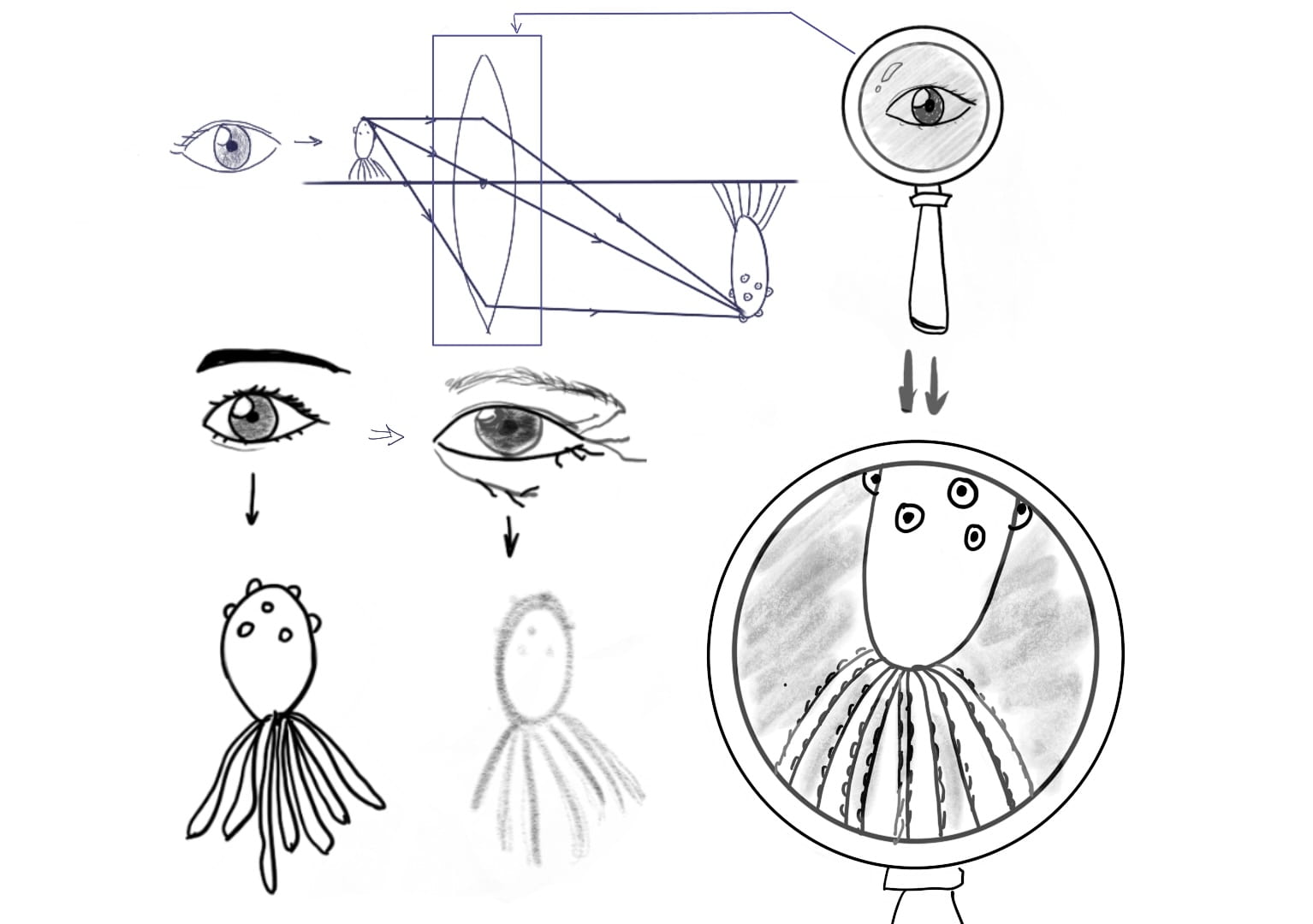Pioneer Plaque-Magnifying Glass
by Yixi & Jean
An important tool in the human world is the magnifying glass, a small and simple-structured optical instrument that helps people to a great extent in daily life. The device is so deceptively simple in its design, yet profoundly transformative in its function.
The need for this tool arises from inherent limitations in human vision and the necessity to perceive and comprehend intricate details that are otherwise imperceptible to the naked eye. In the human world, unfortunately, most people only have limited eyesight. We human beings can neither see things far away clearly nor catch the details of tiny things. To meet the demand for tasks requiring a clear view of distant things, close inspection of small objects, and fine details, the magnifying glass then came into existence to compensate for human visual limitations.
Magnifying glasses typically employ a convex lens made of glass or plastic as the main body, and add some plastic frame to make it holdable. Usually, a magnifying glass is as large as the size of a human being’s hand, which is easy to take and use. We used the difference between the eye of a young person and the one of an elderly to show the limited eyesight and the necessity of a magnifying glass.
The key part that backs up the function of a magnifying glass is the convex lens, shown in the plaque as well. A piece of convex lens is usually curved outwards, like a little bump in the middle. This shape is key because it helps bend light in just the right way. When light passes through the lens, it gets bent or refracted, making things look different. When an object is placed within the focal length of the lens, which is the distance between the lens and the point where the light converges, the lens bends the light rays coming from the object. Light rays emitted or reflected by the object navigate through the convex lens, converging at a focal point situated on the opposite side. It is at this juncture that the scattered beams coalesce into a unified entity, laying the foundation for the subsequent magnified imagery.
Then, on the same side as the object being looked at, a magnified image appears. It’s like a virtual copy of the thing that is being observed, but bigger and clearer. This wondrous virtual image materializes a larger-than-life representation that captures the essence of the original in exquisite detail. It is as if the magnifying glass possesses the power to unveil hidden dimensions of reality, revealing patterns, textures, and intricacies that elude the unaided eye.This trick works because of the way the lens curves and bends the light. Typically, greater curvature and shorter focal lengths yield higher magnification. Magnification is often quantified by comparing the size of the virtual image to that of the actual object.
In human beings’ everyday life, the portability and simplicity of magnifying glasses render them invaluable tools in countless scenarios. Magnifying glasses find myriad applications across diverse domains, enabling us to overcome the limitations of human vision and delve deeper into the mysteries of existence. It is a symbol of our insatiable curiosity, our relentless pursuit of knowledge, and our unwavering commitment to unraveling the secrets of the cosmos.

Leave a Reply